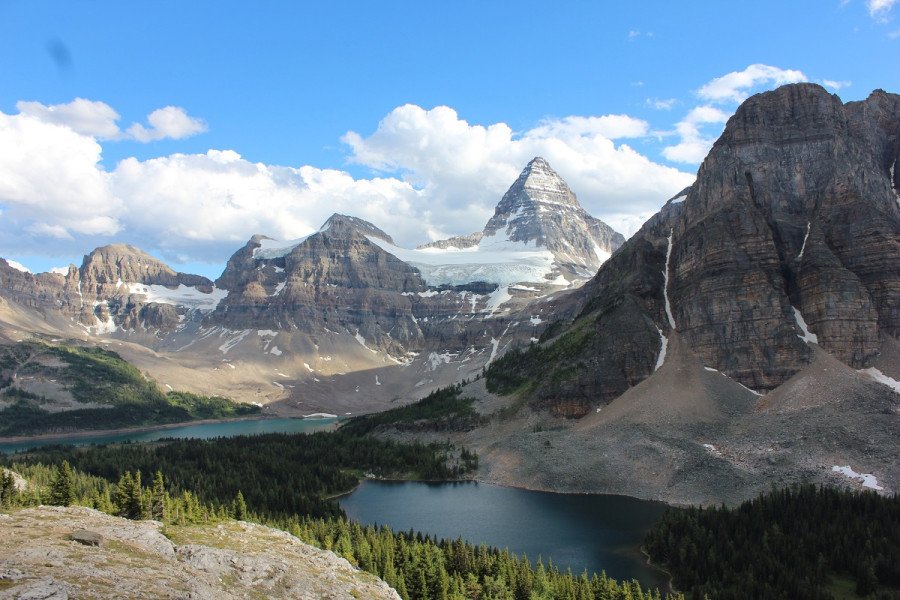The shape of B.C.
Using experiments, games, and videos, students learn about landforms in B.C. and how water, ice and wind shape these landforms.
- Grade 3
- 3 activities
- 1.3 hours

Big idea
Science 3
- Wind, water and ice change the shape of the land.
Learning objectives
- Understand what landforms are and how they are formed.
- Understand how the movement of water, wind and ice can change landscapes.
- Understand the connection between landforms, water, and people.
- Understand how water and energy conservation help to protect B.C.
Activities

Water, wind and landforms
Discover the power of water, ice and wind to move mountains.
BC curriculum fit
Science 3
Big idea
- Wind, water, and ice change the shape of the land
- Sample questions to support inquiry with students: How is the shape of the land changed by environmental factors? What are landforms? What landforms do you have in your local area?
Content
- Major local landforms
- Observable changes in the local environment caused by erosion and deposition by wind, water and ice
Curricular competencies
Questioning and predicting
- Demonstrate curiosity about the natural world
- Make predictions based on prior knowledge
Processing and analyzing data and information
- Experience and interpret the local environment
Social Studies 3
Content
- Relationship between humans and their environment
Curricular competencies
- Recognize the causes and consequences of events, decisions, or developments (cause and consequence)
Physical and Health Education 3
Big idea
- Daily participation in physical activity at moderate to vigorous intensity levels benefits all aspects of our well-being
Assessments
- Assess students’ understanding of different landforms and which ones we find in B.C.
- Assess students’ understanding of how water moves and how it can be used to make electricity.
- Assess students’ ability to communicate their ideas in the group discussions and collaborate building on each other’s ideas.
- Assess students’ understanding of how important it is to conserve water and energy and protect B.C.
Background info
Landforms in B.C.
B.C. is a beautiful province, made of many landforms including rocky coastlines, sandy beaches, forests, lakes, mountains, inland deserts, and grassy plains. For more information on B.C. go to WelcomeBC.
Changing landforms
Landforms are always changing. Sometimes this happens slowly over millions of years, and sometimes it happens rapidly. Landforms are shaped and continuously changed by water, wind, and ice. The process is through:
- Erosion: Earth materials being worn away or moved by natural processes like water, wind, and ice.
- Weathering: Static breaking down or dissolving of minerals.
- Deposition: Rocks and soil are moved and arrive in new places
For more information on erosion and weathering check out National Geographic: erosion and weathering.
Glaciers
Glaciers move downhill and outward under the weight of gravity. The movement is comparable to the movement of a river, but much slower. Glaciers can form on tops of mountains or in valleys. Constant thawing and refreezing causes fractures in bedrock and can deposit rocks far from their original location.
Watch this video to learn how glaciers move slowly.
Water wheels and clean, renewable electricity
Water wheels have been traced back in history to ancient Romans, to power machinery for grinding flour. The earliest turbines were invented and used in the early 19th century, and the world’s first hydroelectric power project was in England in 1878. They began to be used in North America in the 1880s. Currently more than 90% of B.C.’s electricity is generated with water. Dams are built across a river, creating large reservoirs or potential energy. As the water flows down through the dam and down pipes known as penstocks, its kinetic energy is used to turn a turbine. The generator converts the turbine's mechanical energy into electricity. This electric energy then goes through various transmission processes before it reaches our homes and business. This electricity is both clean and renewable.
For more information check out:
Conservation
Water and electricity are closely connected here in B.C. We know that with climate change, water levels can vary, including having too much water at times, such as during the floods in Fall 2021, and having longer droughts, such as in Fall 2022. Thus, water conservation is getting more and more important. Some dams, such as the Coquitlam watershed dam, are used both for potable water and to divert water to Buntzen lake for generating electricity, so conserving water also means that we have enough water to make electricity.
Water and energy conservation tips:
- Take short showers, ideally 5 minutes or less. Many showers use 10L per minute.
- Let the lawn go brown. Water use goes up in the summer, but that’s when we have less precipitation.
- Water gardens in the early morning or evening, to reduce evaporation.
- Turn off the tap when you’re done, and when brushing your teeth and washing your hands.
- Get a low-flow showerhead, low-flow toilet, aerators for your taps, to reduce water use.
- Wash laundry in cold water, and only wash clothes when they are dirty.
- Unplug electronics which can draw phantom power from the grid even when turned off.



